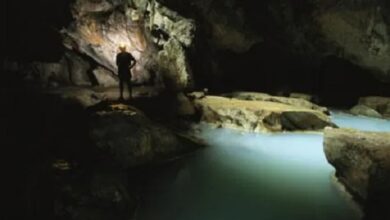What is Catastrophism History and Characteristics of the theory
Catastrophism Theory
The catastrophic theory states that the Earth and most of its components were formed through the succession of catastrophic events that caused the disappearance of certain species, animals and plants, and allowed the appearance of others. It peaked during the 17th, 18th and early 19th centuries.
Catastrophism proposes the hypothesis that the Earth originated through a sudden event of great magnitude. The manifestation of natural events of great destructive capacity, such as earthquakes, tornadoes, tsunamis, among others, are the elements that it uses.
Catastrophism has been questioned, since it establishes that only after catastrophic events do major terrestrial changes occur. However, it must be taken into account that in prehistory the climatic and natural conditions of the Earth were not the same as they are today and that, over time, great natural changes occurred without the need for destructive natural phenomena.
There are those who still defend some postulates of catastrophism, developing currents and derived thoughts that are scientifically accepted.
History of catastrophic theory
The beginnings of catastrophism have their origin in the works of the Irishman James Ussher and in his chronology on Earth, which tried to assign an age to the Universe and cause its formation.
In 1650, Ussher wrote the book The Annals of the World and, based on the Bible, proposed:
- That the creation of the Earth took place on Sunday, October 23, 4004 BC
- The expulsion of Adam and Eve from Paradise took place on Monday, November 10, 4004 BC. W.
- The end of the Universal Flood occurred on Wednesday, May 5, 2348 BC. W.
Obviously, these data were wrong, as the Earth’s age is currently estimated to be around 4470 million years and the same for the Solar System.
Later, one of the main promoters and advocates of the catastrophic theory was the French paleontologist Georges Cuvier (1769-1832).
Cuvier said that the most significant geological and biological changes on Earth were not due to slow, gradual processes (like many other natural phenomena), but to sudden, sudden, violent processes; catastrophic, anyway.
Cuvier influenced a good part of his positions with creationist and even biblical theories, which gives the catastrophic theory a great religious imprint, since it references biblical events such as the Great Flood and Noah’s Ark as justification for the presence of certain fossils. discovered, for example.
The Church would eventually take advantage of this unification of scientific and religious character to adopt theories of catastrophism for its own benefit and use it as a basis for providing greater truth to its own biblical statements.
The foundations laid by Cuvier with the theory of catastrophism allowed progress, giving rise to uniformity, a paradigm that would give rise to modern geology as a professional science.
From this new theory, it was verified that the Earth’s conditions evolved over time and that the changes were not due only to violent and catastrophic phenomena.
Characteristics of the catastrophic theory
Cuvier stated that natural events of greater magnitude and destructive capacity were responsible for generating the most remarkable physical changes on Earth, in addition to having a great influence on the presence of animal and plant species throughout Prehistory and History. .
In this way, earthquakes, hurricanes, tornadoes, volcanic eruptions and other catastrophic geological and meteorological phenomena would be primarily responsible for these changes.
Currently, it has been possible to determine the influence that, for example, volcanic eruptions exert on adjacent ecosystems, and their ability to “reset” in soils and vegetation.
However, other phenomena such as tornadoes and even earthquakes (depending on their magnitude) may not be strong enough to cause really considerable changes.
Perhaps one of the few phenomena resolved by catastrophism was the extinction of dinosaurs because of a sudden, highly violent event, such as a meteorite.
religious implications
Catastrophism theory is a paradigm highly permeated by ecclesiastical and biblical influence. At the time of its public manifestation, the Church had great power over academic research.
Cuvier noticed a certain relationship between some phenomena of creationist theory and its catastrophic postulates, responsible for the collection, allowing one to provide the answers of the other.
For this reason, stories like Noah’s Ark occur in the theory of catastrophism as a justification for the presence of certain species and the extinction and fossilization of others. The Church took advantage of this to protect some of its most incredible stories with some scientific support.
New notions about terrestrial antiquity
Catastrophism was one of many attempts to determine Earth’s age and perhaps the reason for its location in the galaxy and universe, as well as its unique conditions for harboring life.
Like any good paradigm, although it could not be maintained over time, catastrophism served to give rise to new perspectives on geological knowledge and modernize terrestrial study and reflection processes.
This would occur with the emergence of uniformity or actualism, promoted by Hutton in 1788 in his “Theory on Earth”, which would establish that the greatest terrestrial changes were gradual over time and not subject to some serious events.
New implications
Over time, catastrophic approaches were renewed, giving rise to a paradigm known as neocatastrophism, which seeks to establish the relationship that catastrophic events have (which were previously seen as the main cause of changes) in the process of gradual Earth change. .
This new perception is worked on professionally and adds to modern geological efforts to continue deciphering the Earth’s unknowns.


